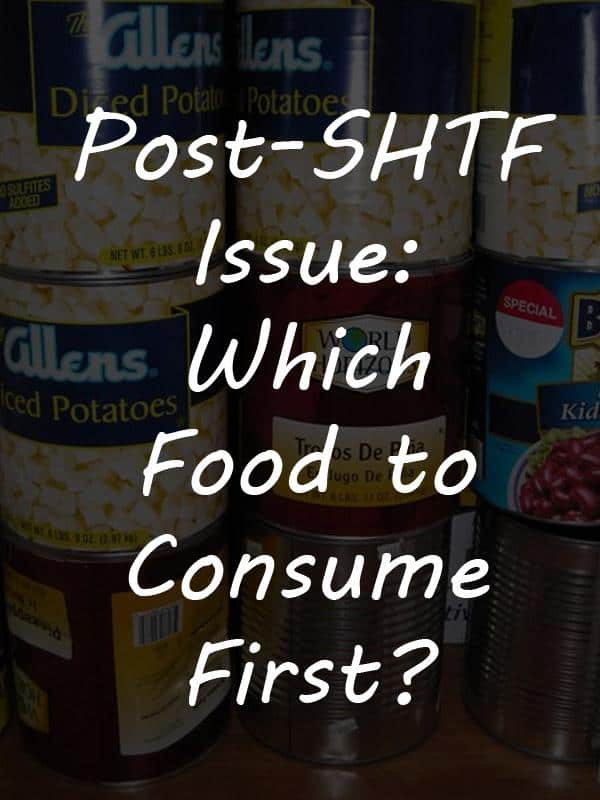When SHTF, food is definitely a high priority for many preppers. If you’ve ever watched the reality show “Naked and Afraid” you know how important your caloric intake can be in a survival situation.
The average adult needs to consume 1,800 to 2,400 calories daily to maintain a healthy body weight. For those doing the type of manual labor tasks required during a SHTF situation, calorie intake should be on the higher end of that range.
Foraging for wild edibles in the harsh environment of “Naked and Afraid” wasn’t enough to provide the energy needed to accomplish the necessary tasks to survive. Chopping firewood, throwing a heavy fish cast net, building or reinforcing a shelter, even walking the needed distance to get water, was made nearly impossible by lack of energy.
Even when the participants caught fresh fish or were able to kill a pig, they didn’t have the supplies to preserve the leftovers for later. They ate what they could eat that day and several days later their bodies were craving protein again.
So, when it comes to post SHTF issues, no matter how much food you have on hand, what food to consume first becomes a critical decision. If you consume the food you have on hand in the wrong order, you risk losing a huge portion of food to spoilage and you risk running out of food before you can get a new source of fresh food established.
Most of us won’t be in the Amazon jungle when SHTF hits. We will be in or at least able to get to a home where we have food on the counter, in the fridge, the freezer, or growing in the garden. Below is the breakdown of what food to consumer first to help ensure your family has food for as long as possible post SHTF.
#1. Refrigerated Food
Your normally refrigerated food should be consumed first. If the interior of the refrigerator remains cold, you need to consume refrigerated food within 6-8 hours.
Buying an appliance thermometer (one that’s not dependent on batteries) for your refrigerator will help you determine if and when the temperature rises above 40 degrees Fahrenheit when the power goes out.
If you have meat in the refrigerator, and the temperature goes up too much, you either need to cook it and eat it or smoke it, salt it or dehydrate it in order to prolong its shelf life.
Foods such as butter, fruit juice, condiments like ketchup, mustard, relish, salad dressing, jelly, and barbecue sauce will be still good for a day or two even with the power out.
Prioritize consumption of the following foods if they are in your refrigerator and you cannot get the power back on as they will go bad after just two hours:
- Poultry, meat, or seafood (cooked or raw)
- Dairy products such as milk, yogurt, cottage cheese, or soft cheeses like Brie or feta
- Lunchmeat
- Pizza with meat toppings
- Tartar sauce, mayonnaise, or creamy salad dressings
- Rice, cooked pasta, or potatoes as well as any dishes prepared using these foods
- Stews, soups, and casseroles
Any food that feels slimy, has a strange color, or feels warm should be discarded. You can check your eggs by floating them in a cup of water. Eggs that sink should be okay, any egg that floats should be discarded.
#2. Fresh Food
Fresh food that has come from the store or has already been harvested from your garden will spoil within just a couple of days, so it should be among the first foods you eat.
Fresh fruit such as bananas and strawberries will spoil more quickly than fruit like apples and oranges. Keep this in mind as you decide what to eat in the first few days following SHTF and eat the most vulnerable fresh foods first.
Don’t just eat what you have a taste for but instead eat the food that will spoil first. Try to make your meals for the first day or two from your refrigerated food that is still good and the fresh food you have on hand.
If you do have a garden that is already producing, and you live in an area that will be quickly overrun by looters, harvest what you can and use your wood cookstove or portable canning stove to can it and get it into your stockpile. Fresh fruits and vegetables from your garden can also be dehydrated using the sun and screens.
This way they take up less space, have a longer shelf life, and can become part of your stockpile where they will be at less risk from looters passing by.
#3. Frozen Food
When SHTF, your freezer food is going to thaw pretty quickly if you don’t have available solar power. It helps if you keep your freezer full at all times. If you can’t keep your freezer full of food, fill milk jugs with water and allow them to freeze and take up the extra space in the freezer.
When the power goes out, leave the door closed while you eat your refrigerated and fresh foods in the first day or two. If that cold air cannot escape, it may take 2-3 days for food to thaw.
By then, you’ll be ready to start eating it. A full freezer can maintain its temperature for about two days, but that time is cut in half if the freezer happens to only be half full at the time.
An appliance thermometer will let you know when the temperature rises above 0 degrees Fahrenheit. If you don’t have an appliance thermometer, you can also put a cup of water into the freezer and put a quarter on top of it once it freezes solid.
When you experience a power outage, keep the freezer door shut. If the quarter is no longer on top of the cup, you’ll know approximately how much thawing occurred by how far it dropped in the cup.
Food with ice crystals in it can be safely refrozen if you can get power back on. After meat thaws however, cook it all thoroughly on your BBQ grill or wood cook stove.
If you can keep the temperature in your freezer below 40 degrees, then you still have approximately 36-48 hours to eat it as long as you can keep it cold.
You may want to print off copies of these food safety charts for reference in a power outage. If you’ve prepared ahead, you can salt preserve, dehydrate, or can your frozen meat in order to preserve it and give it a longer shelf life.
#4. Stockpiled Foods
The recommended stockpile of food for a SHTF event is 6 months to one year or more. The reason for this large stockpile of food is to give you enough food on hand to eat during the time it may take to produce food from your own garden.
The food you have stockpiled that doesn’t require refrigeration should be saved until you’ve eaten all of your fresh and refrigerated foods.
Sure, you may use some of your stockpiled flour, rice, or beans to make meals from your refrigerated or frozen foods, but you’ll want to save your canned fruit and vegetables for the time when your fresh and frozen ones have been eaten.
#5. Other Foods
If you have MREs as part of your stockpile, you definitely want to save these rather than thinking of these a food to consume first. MREs are designed to have a longer shelf life so they make a great back up food to have on hand. MREs are good to have in the event that you need to bug out or if you experience a time when making a larger meal just isn’t feasible or safe.
Wrap-Up
Now that you have a better idea of what food to consume first during a SHTF event, take some time to make sure you have the supplies you need to extend your food supply. Pickling salt and brown sugar are used to make brine and to salt meat so those are great to stock up on.
Canning jars, canning lids and rings, a jar lifter, and a stove that doesn’t require electricity but is sturdy enough for canning are great things to add to your stockpile.
Another good strategy is to practice all the different ways of preserving food now, before a SHTF event occurs.


Born and raised in NE Ohio, with early memories that include grandpa teaching her to bait a hook and watching her mom, aunts, and grandmothers garden, sew, and can food, Megan is a true farm girl at heart.
For Megan, the 2003 blackout, the events of 911, and the increasing frequency of natural disasters like Hurricane Katrina, spurred a desire to be more prepared. Soon to be living off-grid, this mother of four and grandmother of ten is learning everything she can about preparedness, survival, and homesteading.

Great info!! I would like to see an article on canning over an open fire.
An egg which floats is old, but it is not necessarily bad. Certainly check it for smell and appearance, but don’t throw it away JUST because it floats.
Canned food which is past it’s “best by” date is also not necessarily bad. As long as the can is not swollen, punctured, rusted or otherwise significantly different than when it was purchased “new”, it will probably be ok.
Condiments, jellies, any foods with high sugar & acid should be good for quite awhile if you keep them in a cool part of the house. And eggs keep for quite awhile as well. I have a large chest freezer & the bottom is lined with juice bottles of water (ice). Depending on how full the freezer I stick these frozen bottles in anywhere there’s a space. If you don’t open the freezer it will hold for a good long. time. Some of the ice bottles can be packed in ice chests to hold refrigerated items a little longer. And when the bottles melt you have another source of water.